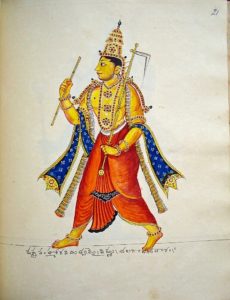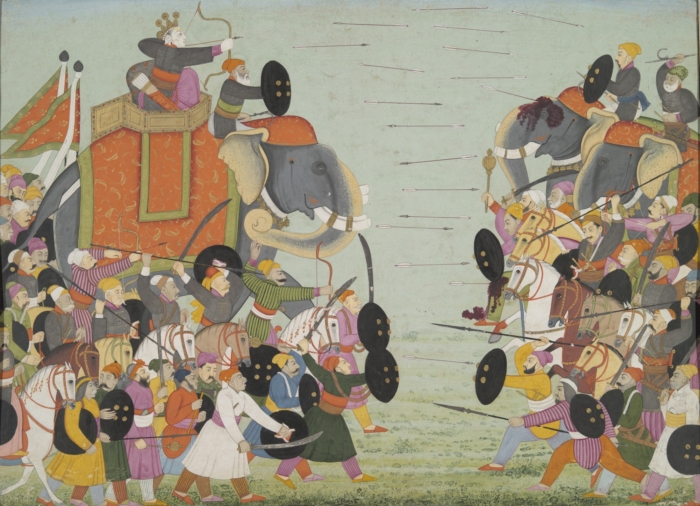Trying to understand Hindu thought from top to bottom is like standing outside in the middle of a heavy storm and trying to balance raindrops in a spoon. Raindrops are single drops of water, but they lose their form very quickly, are hard to tell apart from each other, and they even evaporate within a few hours to soon become new raindrops.
The first step to discovering value in Hindu thought consists of not even trying to understand it.
According to scholar Troy Wilson Organ, this approach to religion is not familiar to Westerners, who are may find Hindu thinking “to be scholastic, unrealistic, dreamy, and fuzzy.” He adds that “Things do not appear to be presented in sharp focus; rather they seem to blend into each other.”
We can find an example of this in the Hindu Legend of Balarama. Balarama was the brother of Krishna. Both of the brothers were created when an architect of the universe, Vishnu, saw the need for good to battle against evil in the world. Vishnu used two hairs of opposite colors, light and dark, with which to form the boys. However, in the real world, Balarama was born before Krishna, as the 7th child to his mother. To further complicate matters, Balarama was transferred from his real mother’s womb to be born in another woman’s womb so that he would be safe from a tyrant who did not want his real mother, Devaki, to bear any children. So, following his birth to a woman named Rohini, Balarama was discovered to actually be the child of Rohini.
 Reality and chronology become difficult to recognize in Hinduism, partly because as Westerners we are used to thinking in terms of a logical linear process. By contrast, Organ states, “Hindu thinking is nonlinear, clustery, configurative,” illustrating that rather than following linear steps, it radiates out from a central focal point of concern by suggesting that if “starting from A, the Hindu moves to AB, AC, AD, and AE; then he moves from AB to ABW, from AC to ACX, from AD to ADY, and from AE to AEZ; and hence out in wider and wider relationships.”
Reality and chronology become difficult to recognize in Hinduism, partly because as Westerners we are used to thinking in terms of a logical linear process. By contrast, Organ states, “Hindu thinking is nonlinear, clustery, configurative,” illustrating that rather than following linear steps, it radiates out from a central focal point of concern by suggesting that if “starting from A, the Hindu moves to AB, AC, AD, and AE; then he moves from AB to ABW, from AC to ACX, from AD to ADY, and from AE to AEZ; and hence out in wider and wider relationships.”
A Hindu legend has the same comfort to its listeners as the words “. . . and a partridge in a pear tree” might have to a child who is listening to “The 12 Days of Christmas.” Because of its fidelity the elements from which the legend originated, Hinduism exhibits a conservative and stable character. Its original elements remain intact, even as they are being developed upon.
Balarama was a hero
Balarama was a hero, especially strong, who killed a demon in his early childhood by whirling around by its legs until it was dead and throwing it up into a tree. He also changed the course of a river and a city by planting his farm tool into each of them and dragging them around whichever way he desired until he got what he wanted from them. He even died a powerful death, with a serpent said to have emerged from his mouth.
An explanation that can be offered to account for the richness of detail, contradictions, and complex genealogy so essential to Hindu legends is that the society of India from which these legends emerged is distinctive because of its economic and social situations. While the population of India over 3 times larger than that of the United States, people live much closer together in India than in the U.S. Only 87 U.S. citizens share the space of a square mile while 954 Indians share the same space. As a result, Indian citizens must compete against one another for the same resources. Extended families hold a great deal of importance in Indian culture, and traditions are thus interpreted from many different perspectives as each family or school of thought puts its own spin on it.
However, even to Westerners, bound within small nuclear families, these Hindu legends still have the power to engage the heart, entertain it, and even to enlighten it.






